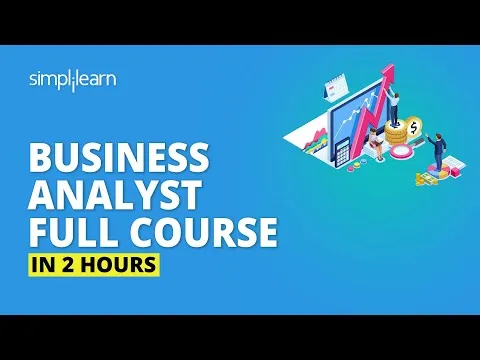
Beginner& Introduction to SQL and Databases 
This course is designed to provide a beginner's introduction to SQL and databases. It will cover the basics of SQL, including how to connect to a MySQL database, and an introduction to the MySQL database system. Students will learn the fundamentals of SQL, such as how to create and manipulate tables, query data, and perform basic data analysis. Additionally, the course will provide an overview of database design and optimization techniques. By the end of the course, students will have a solid understanding of the basics of SQL and databases, and be able to confidently use them in their own projects. ▼
ADVERTISEMENT
Course Feature
![]() Cost:
Cost:
Free
![]() Provider:
Provider:
Udemy
![]() Certificate:
Certificate:
No Information
![]() Language:
Language:
English
Course Overview
❗The content presented here is sourced directly from Udemy platform. For comprehensive course details, including enrollment information, simply click on the 'Go to class' link on our website.
Updated in [May 17th, 2023]
Welcome to Beginner& Introduction to SQL and Databases! This course is designed to help you understand the basics of SQL and databases. You will learn how to use SQL to query data from databases, how to create and manage databases, and how to connect to MySQL. By the end of this course, you will have a solid foundation in SQL and databases.
Course Overview: This course will provide you with an introduction to SQL and databases. You will learn the basics of SQL, how to create and manage databases, and how to connect to MySQL. You will also learn how to query data from databases and how to use SQL to manipulate data.
Possible Development Directions: After completing this course, you can further your knowledge by exploring more advanced topics such as database design, database optimization, and data analysis. You can also learn more about specific database systems such as Oracle, PostgreSQL, and MongoDB.
Related Learning Suggestions: To further your knowledge of SQL and databases, you can take courses on database design, database optimization, and data analysis. You can also read books and articles on SQL and databases. Additionally, you can join online communities and forums to discuss SQL and databases with other professionals.
[Applications]
After completing this course, students should be able to apply their knowledge of SQL and databases to create and manage databases, query data, and create reports. They should also be able to use MySQL to create and manage databases, as well as to connect to other databases. Additionally, they should be able to use SQL to create and modify tables, query data, and create reports. Finally, they should be able to use SQL to create and manage stored procedures and triggers.
[Career Paths]
1. Database Administrator: Database Administrators are responsible for the installation, configuration, and maintenance of databases. They also ensure the security and performance of the databases. With the increasing demand for data-driven decision making, the demand for Database Administrators is expected to grow.
2. Data Analyst: Data Analysts are responsible for analyzing data and providing insights to help businesses make better decisions. They use a variety of tools and techniques to analyze data and create reports. With the increasing demand for data-driven decision making, the demand for Data Analysts is expected to grow.
3. Data Scientist: Data Scientists are responsible for analyzing large amounts of data and using machine learning algorithms to uncover patterns and insights. They use a variety of tools and techniques to analyze data and create models. With the increasing demand for data-driven decision making, the demand for Data Scientists is expected to grow.
4. Business Intelligence Developer: Business Intelligence Developers are responsible for developing and maintaining business intelligence systems. They use a variety of tools and techniques to create reports and dashboards that help businesses make better decisions. With the increasing demand for data-driven decision making, the demand for Business Intelligence Developers is expected to grow.
[Education Paths]
1. Bachelor of Science in Computer Science: This degree path provides a comprehensive overview of computer science, including topics such as programming, software engineering, and database management. It also covers the fundamentals of SQL and databases, giving students the skills to develop and maintain databases. Additionally, this degree path is becoming increasingly popular as the demand for computer science professionals continues to grow.
2. Bachelor of Science in Information Technology: This degree path focuses on the application of technology to solve problems. It covers topics such as software development, network security, and database management. It also provides an introduction to SQL and databases, giving students the skills to design and manage databases. This degree path is becoming increasingly popular as the demand for IT professionals continues to grow.
3. Master of Science in Data Science: This degree path focuses on the analysis and interpretation of data. It covers topics such as machine learning, data mining, and database management. It also provides an introduction to SQL and databases, giving students the skills to design and manage databases. This degree path is becoming increasingly popular as the demand for data scientists continues to grow.
4. Master of Science in Business Analytics: This degree path focuses on the application of analytics to business decisions. It covers topics such as predictive analytics, data visualization, and database management. It also provides an introduction to SQL and databases, giving students the skills to design and manage databases. This degree path is becoming increasingly popular as the demand for business analytics professionals continues to grow.
Course Syllabus
Choosing a GUI
Connecting to our Database
Connection Properties
Database Tables Explained
Creating a Database Table
Inserting Records
Data Types
Dropping a Table
Start Querying your data using SELECT
Counting Records
You have access to other databases! Check it out!
Previewing your records
Filtering records and numeric data types
Filtering records using Greater Than operator
Filtering records using Less Than operator
Using the BETWEEN condition
Counting a subset of records
Intro to AND
Solutions to Exercise
Using the OR condition
Sorting data with ORDER BY
Ordering by ordinal column
Solutions to Excercise
The LIKE operator
The NOT LIKE operator
THE IN operator
Solutions to Excercise
Using MIN and MAX
Rounding and other Arithmetic
Pros & Cons

Well explained

covers basics of SQL

practical and handson

easy to understand

concise

straight forward.

Technical inaccuracies

confusing database

long explanations

lack of best practices

no explanation of SQL.
Course Provider

Provider Udemy's Stats at AZClass
Discussion and Reviews
0.0 (Based on 0 reviews)
Explore Similar Online Courses

Blueprism online training RPA Training

3D Interactions and Navigation

Python for Informatics: Exploring Information

Social Network Analysis

Introduction to Systematic Review and Meta-Analysis

The Analytics Edge

DCO042 - Python For Informatics

Causal Diagrams: Draw Your Assumptions Before Your Conclusions

Whole genome sequencing of bacterial genomes - tools and applications

Business Analyst Full Course In 2 Hours Business Analyst Training For Beginners Simplilearn

Business Analyst Training for Beginners Business Analysis Tutorial Invensis Learning


Start your review of Beginner& Introduction to SQL and Databases